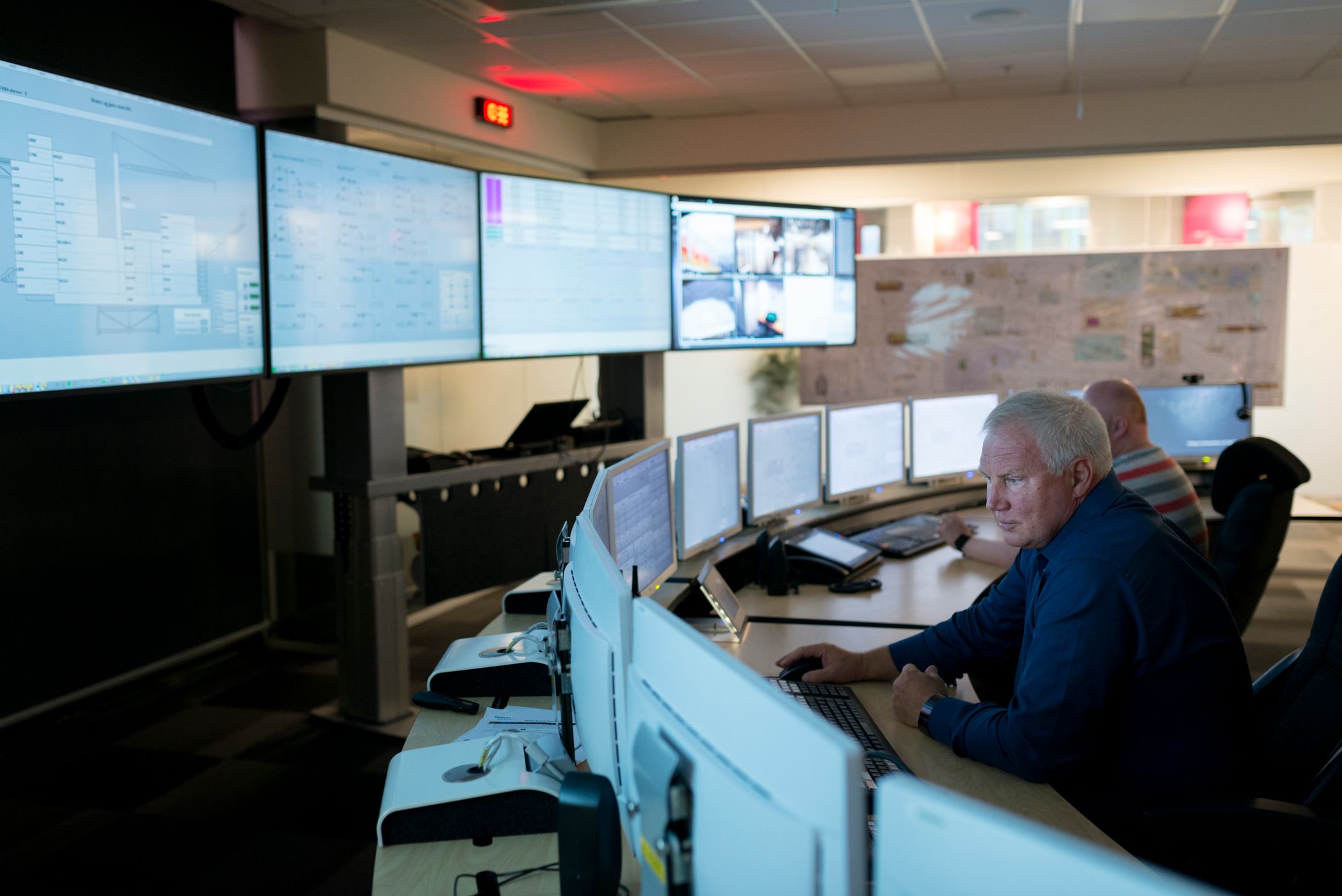Pumping more than just oil – big data makes the ‘Ivar Aasen’ oilrig one of the world’s most effective
Now they see that in the future you can have unmanned oil platforms.
I need to have my retina scanned before we can enter…
The laser records the retina of Senior Engineer Morten Ileby before he opens the door to one of Norway’s most high-tech rooms.
“From here, we can remotely control an entire oil platform located far out in the North Sea,” he says, pointing to a dark room filled with glowing screens.
The oil industry is constantly on the outlook for innovative solutions to streamline operations. A clear example is stationed in 110-metre deep waters halfway across the sea towards Scotland.
The Ivar Aasen oilrig is a modern technological wonder operated by Aker BP and controlled by Siemens systems. The systems facilitate direct control of everything that happens about 200 kilometres out at sea – and all of it takes place from an office building right in the centre of Trondheim.
“Right now, it’s twelve degrees centigrade in the air with good visibility and four-metre high waves,” says Ileby while squinting at the screen.
Choppy, but otherwise nice weather.

In training, we simulate the entire process onboard the oilrig. The instructor behind us is heading a stress management course with buzzing phones, flashing indicators and message alerts to stress the operators as much as possible,” says Senior Engineer Morten Ileby of Aker BP. Photo: Anne Valeur
Digitisation that works
Ivar Aasen has been in operation for almost a year, and both Aker BP and Siemens are now seeing the outlines of a future where oilrigs can be controlled from the mainland. This offer large savings and increased efficiency.
“We started on Christmas Eve. The systems are working properly and production has been very good,” says press spokesman Ole-Johan Faret of Aker BP. He concludes that Ivar Aasen has experienced exceptionally high regularity in its first year of operation.
Ileby says that an icon will immediately flash on the screen if, for example, a gas alarm should be activated. The system will present incoming alerts in an event sequence and identify alarm signals in incoming order.
“That way we’ll identify the source faster!”
The system also automatically extracts direct video coverage from the nearest of the 70 cameras deployed on the platform.
“Video can, along with other data, provide valuable insights to professionals who are to make decisions quickly,” says Faret.

Data capture and analysis make the Ivar-Aasen platform one of the world’s most effective. Photo: Siemens
Big data revolutionises maintenance
Although oil and gas is what is primarily extracted from the oil platform, large amounts of data are also sent back to the mainland.
“Bringing everything to the control room is very important. We analyse the data, fine-tune the operations, and optimise the maintenance work. There are big savings,” says Oddbjørn Aune, who is Ivar Aasen’s Maintenance Officer.
Onboard the Ivar Aasen, thousands of installed sensors monitor both oil and gas production in addition to detecting wear and tear on equipment and material.
“The information is analysed in-house. This helps us, among other things, to plan maintenance based on the actual conditions,” says Danger, and continues:
“We use the information, among other things, to plan for intensive offshore maintenance campaigns. This provides both cost-effective maintenance work and minimises the downtime for Ivar Aasen.”
Ivar Aasen
- Oil platform in the North Sea, 30 km south of Grane and Balder.
- Production started on Christmas Eve 2016.
- Remote controlled from own control room on land, with systems developed by Siemens.
- Aker BP, Equinor (Statoil) and Bayerngas as the largest partners.
Envisioning unmanned platforms
Proximity to experts is also an important element for the land-based control room in Trondheim.
“The expert professionals are located on the floor below, so if we need a petroleum engineer or some underground people, they can come up here and gain direct access to everything,” explains Ileby, adding that it is also a safety aspect.
“Fewer people offshore also gives less exposure to dangerous work. In addition, professionals are easily accessible and require less transport by helicopter to oilfields.
In the future, Aker BP sees scenarios in which oil platforms can be unmanned for certain periods of time.
For major players like Aker BP and Siemens, it’s about finding functional solutions that are both safer and more cost-effective than those used five years ago. Digitisation and smart operations are among the tools to reach this goal.
“All projects have their ups and downs along the way, but the overall result of the Siemens collaboration is very good,” says Ileby, adding: “Make sure you mention that Ivar Aasen was delivered on time – and on budget!”